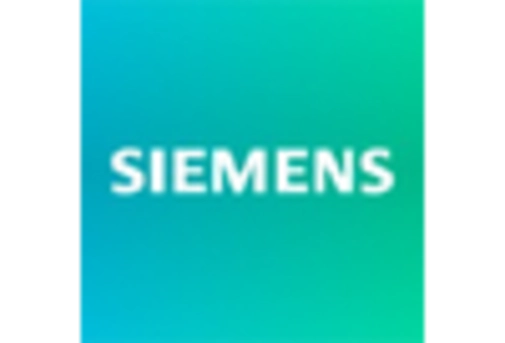Growing Infrastructure Investments
The mobile substation market is experiencing a surge in infrastructure investments across the United States. With the increasing need for reliable power distribution, utility companies are allocating substantial budgets to enhance their grid systems. In 2025, investments in electrical infrastructure are expected to reach approximately $100 billion, with a significant portion directed towards mobile substations. These investments are driven by the necessity to modernize aging infrastructure and improve service reliability. As utilities seek to minimize downtime during maintenance or emergencies, mobile substations provide a flexible solution that can be deployed quickly. This trend indicates a robust growth trajectory for the mobile substation market, as utilities prioritize resilience and efficiency in their operations.
Regulatory Incentives for Modernization
Regulatory frameworks in the United States are increasingly favoring the modernization of electrical infrastructure, which positively impacts the mobile substation market. Government initiatives aimed at promoting energy efficiency and reliability are encouraging utilities to invest in advanced solutions, including mobile substations. In 2025, it is projected that regulatory incentives will lead to a 10% increase in the deployment of mobile substations as utilities seek to comply with new standards and improve their service offerings. These incentives not only facilitate the adoption of mobile substations but also contribute to the overall enhancement of grid resilience and reliability, positioning the mobile substation market for sustained growth.
Increased Focus on Emergency Preparedness
Heightened focus on emergency preparedness in the United States significantly influences the mobile substation market. Natural disasters, such as hurricanes and wildfires, have underscored the need for resilient power systems. In response, utility companies are investing in mobile substations to ensure rapid restoration of power during outages. The Federal Emergency Management Agency (FEMA) has emphasized the importance of preparedness, leading to increased funding for emergency response initiatives. In 2025, it is anticipated that the market for mobile substations will grow by approximately 15% as utilities prioritize the ability to deploy temporary substations in disaster-stricken areas. This trend highlights the critical role of mobile substations in enhancing grid reliability and resilience.
Rising Demand for Renewable Energy Integration
Renewable energy sources are reshaping the mobile substation market. As the U.S. aims to achieve a 50% reduction in greenhouse gas emissions by 2030, the integration of renewable energy into the grid becomes paramount. Mobile substations play a crucial role in facilitating this transition by providing the necessary infrastructure to connect renewable energy sources, such as solar and wind, to the existing grid. In 2025, the share of renewables in the energy mix is projected to exceed 30%, necessitating the deployment of mobile substations to manage fluctuations in power supply. This growing demand for renewable energy integration is likely to drive the mobile substation market, as utilities seek adaptable solutions to accommodate diverse energy sources.
Technological Innovations in Power Distribution
Technological advancements are driving the evolution of the mobile substation market. Innovations in power distribution technologies, such as smart grid solutions and advanced monitoring systems, are enhancing the functionality of mobile substations. These innovations enable real-time data collection and analysis, allowing utilities to optimize their operations and improve response times. In 2025, the adoption of smart technologies in mobile substations is expected to increase by 20%, reflecting the industry's shift towards more efficient and intelligent power distribution systems. This trend suggests that the mobile substation market will continue to expand as utilities seek to leverage technology to enhance service delivery and operational efficiency.






















Leave a Comment